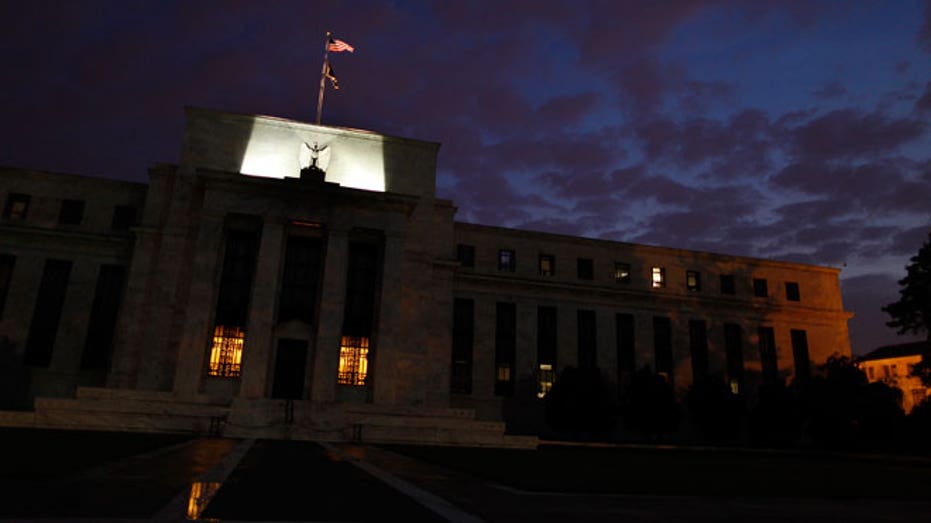The Six Scariest Threats to the Stock Market in 2014
Wall Street strategists believe the stock market is poised to shatter new records next year, even if the returns are below 2013’s gaudy levels.
But even the most optimistic investors acknowledge a positive 2014 is by no means guaranteed.
From the threat of deflation to a melt-up in stock prices, there are a number of potential obstacles that could halt Wall Street’s five-year string of annual gains.
1. Central Bank Policy Blunder

As with most things on Wall Street, the conversation must begin with the Federal Reserve, which is widely expected to begin the delicate process of unwinding its unprecedented quantitative easing experiment.
If the Fed decides to pull the plug on the $85 billion monthly bond-buying program too early, the economy could slip back into recession. If it waits too long, it could unleash a nasty bout of inflation. There’s also the risk the Fed could lose control of the bond markets, sending closely-watched Treasury yields spiking.
“The Fed is in the hot seat. The markets ultimately might find the emperor has no clothes,” said Mark Luschini, chief investment strategist at Janney Capital.
Higher rates could derail the housing market or spark a financial crisis in certain debt-ridden emerging market countries.
The risk of a policy misstep is exacerbated by the leadership change at the Fed, with Ben Bernanke set to hand the keys to the central bank’s $3 trillion balance sheet to Janet Yellen in January.
2. Melt-Up Fueled Meltdown

Up until the past few sessions, the U.S. stock market appeared to be on the verge of overheating. The S&P 500 landed at its 39th record high this year on Monday -- its most in any year since 1998. The benchmark index had been up 27% on the year and 167% from its bear market low.
“I think we were flirting with entering an overshoot phase,” said Luschini.
According to Investor’s Intelligence, the number of bullish investors is nearly at the highest level since October 2007 and the number of bears is at levels unseen since 1987. Investors who have only recently become bullish are under-invested, threatening to drive the markets higher as they play catch-up.
The fear is that if investor sentiment becomes too bullish and stock prices get out of whack with fundamentals, the market could be in store for a nasty meltdown that derails the bull market.
“I think higher equity prices, as perverse as it sounds, bring more risk to the market,” said Luschini.
3. Deflation (and Inflation)

Depending upon who you ask, Wall Street needs to be worried about either a Fed-fueled spike in prices or a scary decrease in prices. Not surprisingly, the Fed is more worried about the latter.
“Given the massive amount of monetary stimulus provided by the major central banks, it's remarkable that this is a serious concern, but it is,” Ed Yardeni, president of Yardeni Research, wrote in a note this week.
The personal consumption expenditures deflator, the Fed’s preferred measure of inflation that excludes food and energy prices, inched up just 1.1% year over year in October -- the slowest pace since March 2011. The Fed’s goal is for inflation to run at a not-too-hot and not-too-cold rate of about 2%.
Central bank officials are likely to point to concerns about low inflation as a core reason for not dialing back on QE later this month.
At the same time, others are more worried about a surge in prices caused by the Fed’s unprecedented intervention and a healthier economy.
4. More Gridlock in DC

A core headwind over the past two years has been the gridlock in Washington that’s prevented politicians from tackling key spending and economic issues.
For now, concerns about political dysfunction have faded, highlighted by the budget deal reached this week.
The compromise “suggests that the bouts of political disagreement that have destabilized U.S. budget policymaking may become less frequent and intense,” Fitch wrote in a report on Wednesday.
But the budget deal itself was rather modest, reducing just 0.1% of the deficit over 10 years, and gridlock could just as easily return to Washington.
The thawing of tensions “doesn’t mean that Washington isn’t capable of more mischief that could roil the markets again,” said Yardeni.
5. Don't Forget About Geopolitics

Worries about a military clash in the Middle East have also faded in recent months thanks to the compromise with Iran and cooling tensions with Syria.
However, there is still a concern that Israel could launch a unilateral attack on Iran’s nuclear facilities that plunges the volatile region into chaos.
Investors are also keeping an eye on tensions over the disputed territories in the South China Sea that could risk a confrontation or miscalculation between China and the U.S. or Japan.
“The stock market rarely discounts geopolitical risks until the shooting starts. The resulting selloff often turns out to be a buying opportunity,” said Yardeni.
6. Another European Eruption

After years of economic recession and financial crisis, Europe is finally showing real signs of stability amid emphatic support from the European Central Bank. Unemployment rates, while still painfully high, have receded, and stock markets have bounced back.
But recent history shows it would be wise not to forget about this continent, which less than two years ago threatened to cause a global crisis by disintegrating.
The threat now is that the lack of financial pressure will take the heat off eurozone politicians, allowing them to continue punting on difficult decisions needed to fix the currency bloc’s flawed structure.